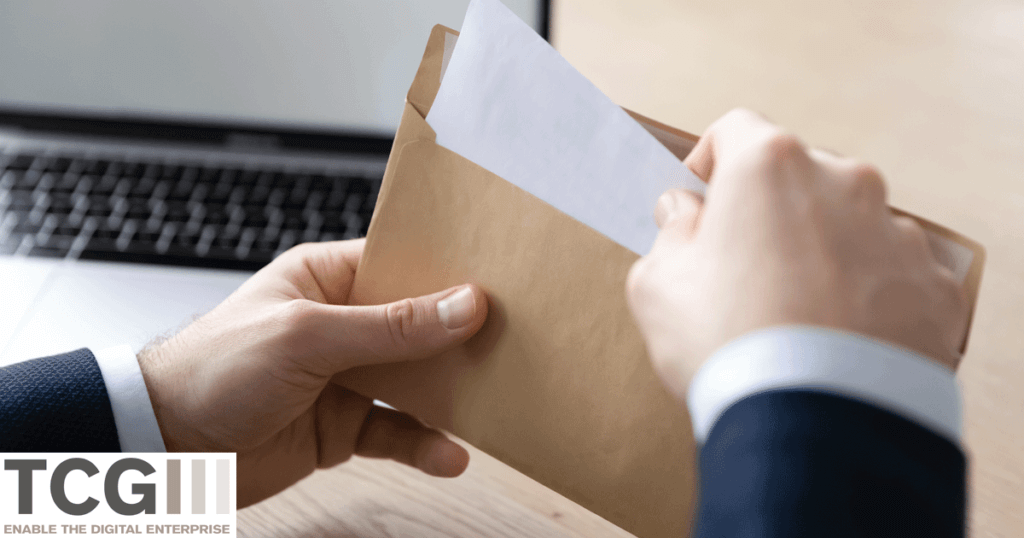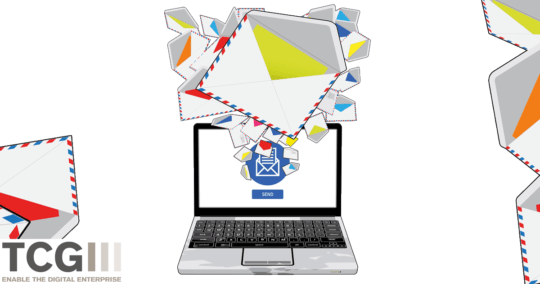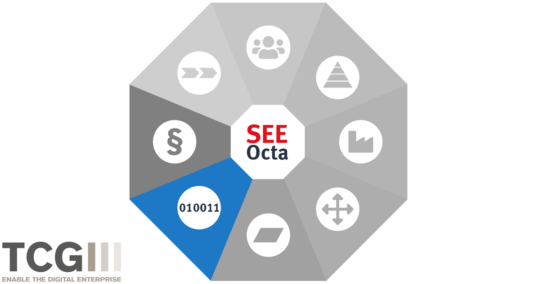Between two worlds – processing paper and digital mail in one system

Organizations are flooded with a large number of incoming documents every day. These documents are sent via a wide variety of communication channels and in a wide range of formats in ever shorter periods of time. In her guest article, Sara Mazzorana from TCG Process GmbH (Baienfurt) explains how all steps for processing incoming mail – regardless of its size and complexity – can be executed efficiently and cost-effectively using a software solution.
Digital Mail Entry – Are Paper-Based Communication Channels Dying Out?
Over the last 20 years, the number of emails sent annually has multiplied. According to a survey by Statista, together with Web.de and GMX (the two providers manage around 38 million email accounts in Germany), the annual email volume increased by a factor of 26 between 2000 and 2018. From 2017 to 2018 alone, the number of emails has increased by 9%. Emails, like other digital forms of communication, are increasingly replacing paper-based communication. At the same time, the number of messages in general is increasing and with it the frequency. This can be attributed to the many possibilities offered by digital communication. Compared to a letter, an email is simply ‘written quickly’.
Mail Entry via Email, Web Portals and Mobile Devices – But You Can’t Do Without Paper
According to a IT study ‘over 80 percent of Internet users in Germany’ regularly communicated via email as early as 2014. Particularly in the business environment email has become a central component of everyday communication. According to Bitkom, so-called ‘functional mailboxes’ such as info@company.com, service@company.com or feedback@company.com pre-sort incoming emails thematically and operate successfully in the business environment. They include everything from product inquiries to orders or address changes of a creditor. These function mailboxes are used to distribute emails within previously defined processing times (‘service level’) for final processing to suitable employees (‘skill-based’)’ or departments for further processing in specialized systems such as CRM or ERP.
However, email is just one of the possibilities. In addition to other digital incoming mail channels such as web portals or mobile devices, many companies also receive paper-based mail via fax, scan or multi-function printers. Although paper-based mail is on the decline in general, paper-based communication with the customer still prevails in some areas. Especially in Germany, a relatively large number of letters are still sent out compared to other countries. In Great Britain, the number of letters sent has decreased by 35 % between 2000 and 2016, in Denmark by as much as 74 %. In contrast, the volume of letters in Germany is still relatively stable, with a decline of 5.4 %. A total of 15.7 billion items were sent out in Germany in 2016. In the context of sensitive personal data, paper is still frequently used. Although this communication channel will continue to decline in the future, it will keep people busy in ‘input management’ for a while yet.
Paper-Based Communication Requires Classification of Incoming Mail
Overall, the hybrid world of digital and paper has made a company’s communication with its environment more complex. Manually performed processes result in high personnel costs, time-consuming and error-prone activities as well as long delays for customers. In the context of strict SLAs, customers today expect fast feedback which often cannot be given due to the lengthy processes.
The biggest challenge is to ensure that incoming documents from different channels are merged into the same process and are not processed independently. For example, a supplier sends a paper invoice and related explanations via email, or a customer uses fax forms for an order and explains additional specifications via email.
This is exactly where so-called mailroom or incoming mail solutions come in, to classify the different types of incoming documents of different input channels and formats – Omni-Collect. This not only saves time and money, but also has a positive effect on customer satisfaction.
Digital Incoming Mail Solutions and AI Join Both Worlds
The tasks relating to incoming mail go beyond simply sorting the documents: Bitkom summarizes the necessary steps in the processing of incoming mail as follows: ‘In the incoming mailroom, the letter mail is opened, checked for notes, digitally captured, classified in terms of content and forwarded to clerks or back-office employees for processing.’
Digital inbox solutions allow efficient and largely automated processing of the steps for an incoming mail item – regardless of its size and complexity. Prior to automatic classification using artificial intelligence, documents were collected and prepared according to the incoming channel in order to be processed efficiently. Providers of input management offer interfaces or solutions in the form of ‘mini’ processes for emails, scanned documents, information from web portals, etc. This ensures that the import is targeted, that no documents are lost on the way and that the classification of incoming mail can be actioned holistically with the next step – the incoming mail solution.
The DocProStar (DPS) software solution offers interfaces and process apps for each incoming channel, making it an ideal partner for managing the complexity of incoming mail. Existing files are accessed via file import. Paper documents, for example, are digitized with the DPS ScanClient and automatically fed into the classification process. A multitude of interfaces and connection possibilities for web portals or mobile devices are available. Customer-specific requirements can be accomodated. Complex incoming emails are recorded with a specially configured processing procedure and prepared for further processes.
TCG is a technology leader in the fields of Input Management and Business Process Automation (BPA). On the basis of a process platform, TCG offers solutions for on-premises and cloud operations using artificial intelligence and self-learning robots.
Documents are classified, extracted, checked and completed in compliance with regulatory and data protection guidelines. Documents from all input channels are controlled by the company and transferred to subsequent specialist systems like the SEEBURGER Solution Extensions for SAP
- Purchase-to-Pay
- OmniChannel-to-Cash
- Order-Response
- Delivery Note
together with the verified business information. The processing of individual documents can be system-supported or fully automated.
Please contact us for further information: Marcus.kern@tcgprocess.com
TCG focuses on ‚ENABLING THE DIGITAL ENTERPRISE‘.
Thank you for your message
We appreciate your interest in SEEBURGER
Get in contact with us:
Please enter details about your project in the message section so we can direct your inquiry to the right consultant.
Written by: Sara Mazzorana
Sara Mazzorana is Marketing Manager at TCG Process GmbH. After completing her Bachelor's degree in Business Administration, Sara Mazzorana specialized further with a MA in "Entrepreneurship and Innovation" at the University of Bolzano. Sara Mazzorana joined TCG in Baienfurt near Lake Constance in 2018.





